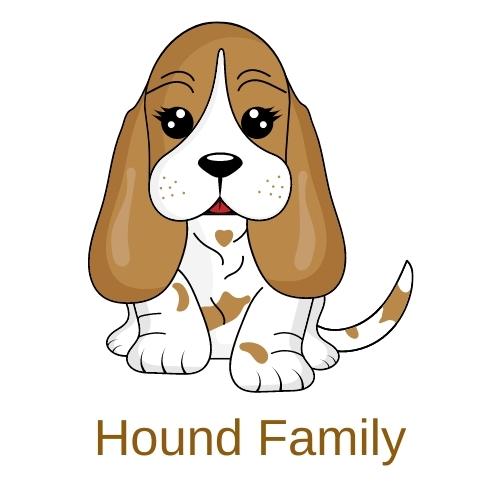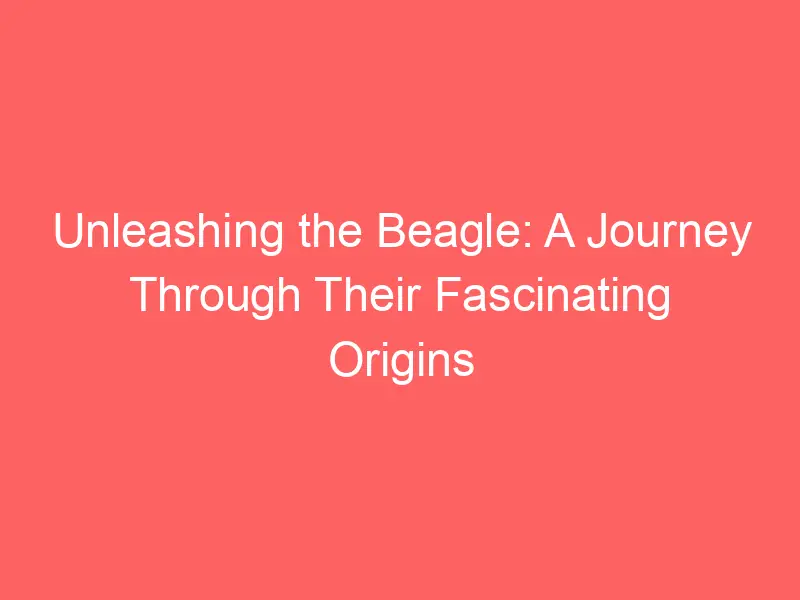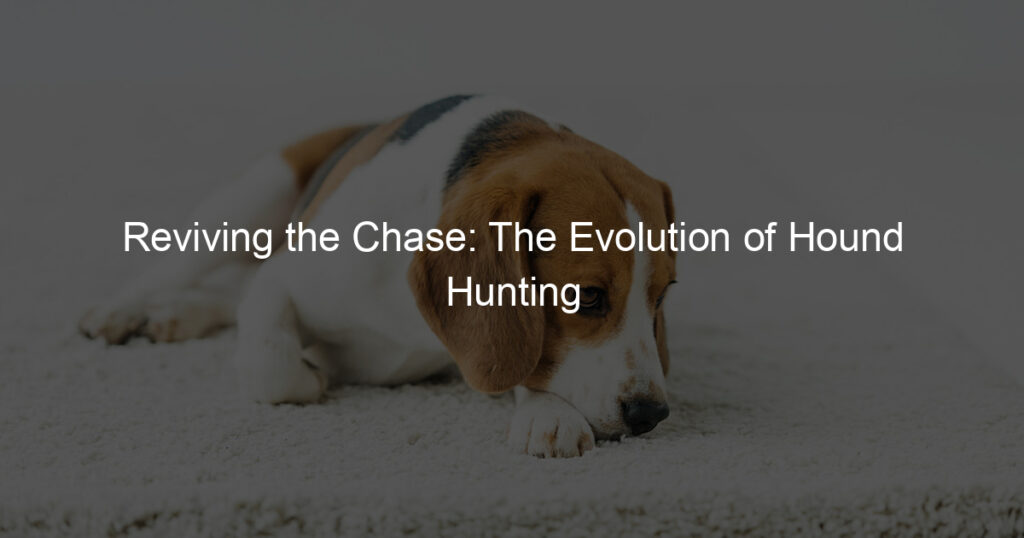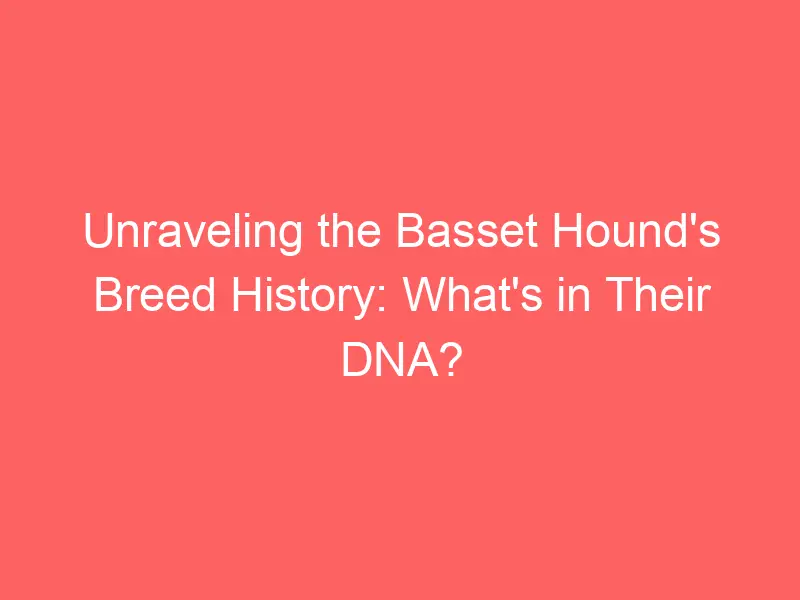
Introduction to Beagle Breed History
Welcome to the fascinating world of Beagles! In this section, we will delve into the rich history of this beloved breed, providing an overview and highlighting the importance of understanding their ancestry.
- Overview of the Beagle breed
- Importance of understanding Beagle ancestry
The Beagle is a small to medium-sized breed of hunting dog, known for its sharp sense of smell and friendly demeanor. Beagles are often described as happy-go-lucky dogs with a natural curiosity that often leads them on exciting adventures. They are also known for their distinctive tri-color coat, usually a mix of white, black, and brown.
Understanding the Beagle’s ancestry is crucial for several reasons. Firstly, it gives us insights into their behavior and temperament. For instance, their history as hunting dogs explains their keen sense of smell and their tendency to follow their noses. Secondly, knowing their ancestry can help us understand and manage potential health issues that are common in the breed. Lastly, it helps us appreciate the Beagle’s journey from a hunting companion to one of the most popular family pets today.
In the following sections, we will explore the origin of Beagle dogs, trace their lineage, and delve deeper into their history. We will also provide key takeaways from the Beagle breed origins and a case study on Beagle breed development. So, let’s embark on this exciting journey to celebrate the Beagle’s historical origins!
Origin of Beagle Dogs
Let’s take a journey back in time to understand where the Beagle breed originated from. This journey will take us through early references to Beagle-like dogs and the geographical origins of the breed.
- Early references to Beagle-like dogs
- Geographical origins of the Beagle breed
The existence of Beagle-like dogs can be traced back to ancient Greece, around 400 B.C. The historian Xenophon mentioned in his writings about a hound that could be followed on foot, much like the Beagles we know today. These dogs were small, had excellent scent-tracking abilities, and were used for hunting.
Fast forward to the 11th century, in England, where dogs similar to today’s Beagles were used in hunting. They were referred to as ‘gazehounds’ or ‘foot hounds’ because they were followed on foot during hunts. These dogs were prized for their ability to track scents over long distances.
The Beagle breed, as we know it today, originated in England in the 1830s. Reverend Phillip Honeywood established a Beagle pack in Essex, England, which is considered the forefather of the modern Beagle breed. Honeywood’s Beagles were bred for their hunting abilities, not their appearance.
Later, in the 1840s, the standard for the Beagle breed was set by an Englishman named Thomas Johnson. Johnson’s Beagles were both attractive and good hunters. These dogs were then brought to America, where they quickly gained popularity.
In conclusion, the Beagle breed has a rich history that dates back to ancient times. From their early existence in Greece and England to their development into the breed we know and love today, Beagles have always been cherished for their excellent scent-tracking abilities and their friendly nature.
Tracing Beagle Lineage
Understanding the lineage of Beagles can be a fascinating journey. Let’s delve into the ancient times to trace the origins of this beloved breed.
Beagle Ancestry in Ancient Times
Beagles, as we know them today, have a rich history that dates back to ancient civilizations. Let’s explore the ancestry of Beagle-like dogs in ancient Greece and Rome, and their evolution in medieval England.
- Beagle-like dogs in ancient Greece and Rome
- Medieval Beagle ancestry in England
Even though the exact origins of Beagles are unclear, many historians believe that Beagle-like dogs existed in ancient Greece and Rome. These dogs were small, had a keen sense of smell, and were primarily used for hunting. The ‘Laconian Hound’, a small dog breed mentioned in ancient Greek literature, is often considered a predecessor of the modern Beagle.
Fast forward to medieval England, the term ‘Beagle’ was used to refer to any small hound. These dogs were popular among nobility and were used for tracking small game like rabbits. Over time, these Beagles evolved, and selective breeding led to the development of the Beagle breed we recognize today.
Tracing the Beagle lineage gives us a glimpse into the breed’s rich history and evolution. From ancient Greece and Rome to medieval England, Beagles have always been cherished for their hunting skills and companionship.
Beagle Ancestry in Modern Times
As we delve into the modern era, the Beagle’s lineage becomes more defined and traceable. The breed as we know it today took shape primarily in the 19th century and in the United States. Let’s explore these developments in more detail.
- Development of the Modern Beagle in the 19th Century
- Beagle Breed Development in the United States
The 19th century marked a significant period in the development of the modern Beagle. In England, Reverend Phillip Honeywood established a Beagle pack around 1830, which is believed to have formed the basis for the distinct breed we recognize today. Honeywood’s Beagles were small, standing at about 10 inches at the shoulder. They were bred for their hunting abilities, particularly their keen sense of smell and tracking instincts.
However, it was Thomas Johnson who refined the breed to produce Beagles that were both attractive and capable hunters. Johnson’s Beagles came in two sizes, the smaller of which was less than 10 inches in height. These Beagles were exported to the United States, where they would play a crucial role in the breed’s development.
In the United States, Beagles were well-received. They were admired for their hunting prowess and compact size. The first Beagles arrived in the U.S. around the 1840s, but it wasn’t until the 1860s that the breed began to gain popularity.
General Richard Rowett from Illinois imported some Beagles from England in the 1860s and began breeding programs. His Beagles were known for their uniformity and high quality. In 1884, the American Kennel Club (AKC) recognized the Beagle as a breed. By the turn of the 20th century, Beagles had become popular across the United States for both hunting and companionship.
In conclusion, the Beagle’s journey from ancient times to the modern era is a fascinating tale of breed development. The breed we know and love today is a result of centuries of careful breeding, with a significant boost in the 19th century and in the United States. This rich history contributes to the Beagle’s unique charm and enduring popularity.
History of Beagles
The Beagle, a breed known for its keen sense of smell and friendly demeanor, has a rich history that spans centuries. This history is not only reflected in the breed’s roles in hunting and tracking, but also in its representation in literature and popular culture.
- Beagles in Literature and Popular Culture
- Historical Roles of Beagles in Hunting and Tracking
Beagles have been featured prominently in various forms of media, demonstrating their widespread appeal and recognition. One of the most famous Beagles in literature is Snoopy from the comic strip “Peanuts” by Charles M. Schulz. Snoopy’s character, known for his imaginative and adventurous spirit, has become a beloved icon worldwide.
In addition to Snoopy, Beagles have also been featured in movies and television shows. For instance, the Beagle named “Porthos” in the television series “Star Trek: Enterprise” is another example of the breed’s popularity in media.
Beagles have a long history of being used for hunting and tracking. Originating in England, they were initially bred for hunting hare, a role that took advantage of their excellent sense of smell and tracking abilities. Their small size allowed them to navigate through dense underbrush and their distinctive howl, known as a “bay”, helped hunters locate them.
Over time, Beagles’ roles expanded beyond hunting. Their keen sense of smell made them valuable for tracking in various scenarios. For instance, they have been used by law enforcement agencies for drug detection and by search and rescue teams to locate missing persons. These historical roles highlight the versatility and utility of the Beagle breed.
In conclusion, the history of Beagles is a testament to their enduring appeal and versatility. From their roles in hunting and tracking to their representation in popular culture, Beagles have left a significant mark on human history.
Beagle Breed Origins: Key Takeaways
As we delve into the fascinating history of the Beagle breed, it’s important to highlight some key insights that have shaped this breed’s development. Let’s summarize the main points we’ve learned about the Beagle’s origins and evolution.
- Understanding the Beagle’s historical origins
- Insights into the evolution of Beagle breed
The Beagle breed has a rich history that dates back to the Roman times. These dogs were initially bred for hunting purposes, due to their keen sense of smell and tracking abilities. The name ‘Beagle’ is believed to have been derived from the French word ‘be’geule’, meaning ‘open throat’, or ‘loudmouth’. This is a fitting description, as Beagles are known for their distinctive howl.
Over the centuries, the Beagle breed has undergone significant evolution. In the 18th century, Beagles were bred to be smaller for hare hunting. However, the trend shifted towards larger Beagles in the 19th century, as fox hunting became more popular. The modern Beagle, as we know it today, was developed in the 20th century in England and was later brought to America. Despite these changes, Beagles have retained their friendly temperament and excellent hunting abilities, making them beloved pets and working dogs worldwide.
In conclusion, understanding the Beagle’s historical origins and evolution provides valuable insights into this breed’s unique characteristics and traits. It’s a testament to the breed’s adaptability and resilience that Beagles have remained popular and cherished throughout history, from Roman times to the present day.
| Historical Period | Key Developments in Beagle Breed |
|---|---|
| Roman Times | Initial breeding of Beagles for hunting purposes. |
| 18th Century | Beagles were bred to be smaller for hare hunting. |
| 19th Century | Shift towards larger Beagles for fox hunting. |
| 20th Century | Development of the modern Beagle breed in England and America. |
Case Study: Beagle Breed Development
Let’s delve into a fascinating case study that examines the development of the Beagle breed, focusing primarily on their physical characteristics.
Evolution of Beagle Breed: Physical Characteristics
The Beagle breed has undergone significant changes over the centuries. These changes are most noticeable in their size, color, and distinctive traits. Let’s explore these in more detail.
- Changes in Beagle size and color over time
- Development of distinctive Beagle traits
Historically, Beagles were much smaller than they are today. Early Beagles, often referred to as “pocket Beagles,” were small enough to fit in a pocket, standing only about 9 inches tall. Over time, selective breeding led to an increase in their size. Today’s Beagles typically stand between 13 and 16 inches tall.
Beagles have also seen changes in their color patterns. Initially, Beagles were primarily white, bred for this color to make them easily visible in the field. Over time, the tricolor pattern – white, black, and tan – became more prevalent. Today, Beagles come in a variety of color combinations, but the tricolor pattern is still the most recognized.
Beagles have several distinctive traits that have developed over time. One of the most noticeable is their large, expressive eyes. These eyes, usually hazel or brown, are one of the breed’s most endearing features.
The Beagle’s ears are another distinctive trait. They are long and droopy, reaching nearly to the end of the Beagle’s nose when pulled forward. This trait was developed to help funnel scents towards the Beagle’s nose, enhancing their ability to smell.
Finally, the Beagle’s tail, or “stern,” is another distinctive trait. It is usually white-tipped, which helped hunters locate their dogs in tall grass. This trait is so prevalent that a Beagle without a white-tipped tail is considered to have a fault in show circles.
Evolution of Beagle Breed: Behavioral Traits
Beagles are known for their friendly and gentle temperament. But did you know that this behavior has been consistent throughout their history? Let’s delve deeper into the behavioral evolution of this beloved breed.
-
Consistency of Beagle temperament throughout history
Beagles have always been known for their friendly and gentle nature. This breed has been a favorite among families and hunters alike due to their consistent temperament. Historical records dating back to the 18th century describe Beagles as “merry” and “sociable”, words that are still used to describe them today. Despite changes in their physical characteristics over time, their behavior has remained remarkably consistent.
-
Beagle breed’s historical background in relation to their modern behavior
The Beagle’s historical background plays a significant role in their modern behavior. Originally bred for hunting, Beagles have a strong sense of smell and tracking instinct. This is why modern Beagles are often seen following their noses, a trait that can sometimes lead them into mischief. Their historical role as pack dogs also explains their sociable nature and love for company. They are happiest when they are part of a family or group, and they get along well with other dogs and people.
In conclusion, the Beagle’s behavioral traits have remained consistent throughout history, making them a reliable and predictable breed. Their historical background as hunting and pack dogs has shaped their modern behavior, making them sociable, friendly, and curious. These traits make them a beloved pet in many households around the world.
Conclusion: Celebrating the Beagle’s Historical Origins
As we conclude our journey through the fascinating history of the Beagle breed, it’s important to take a moment to appreciate the rich tapestry that has led to the Beagles we know and love today. From their early origins to their development over centuries, Beagles have a unique and storied past that deserves to be celebrated.
- Appreciating the rich history of the Beagle breed
The Beagle breed has a long and storied history that dates back to the Roman times. Over the centuries, they have evolved and adapted, becoming the friendly and lovable dogs we know today. Their journey is a testament to the resilience and adaptability of dogs, and a reminder of the deep bond that exists between humans and their canine companions.
- How understanding Beagle breed history can enhance pet ownership
Understanding the history of the Beagle breed can greatly enhance your experience as a pet owner. It can help you understand your Beagle’s behaviors and instincts, and provide insights into their unique characteristics. For instance, knowing that Beagles were originally bred for hunting can explain their strong sense of smell and their tendency to follow their noses. This knowledge can help you provide a more fulfilling and stimulating environment for your Beagle, and deepen your bond with them.
In conclusion, the history of the Beagle breed is a fascinating journey that reveals the deep bond between humans and dogs. By appreciating this history, we can better understand and care for our Beagle companions, and celebrate the unique qualities that make them such beloved pets.








